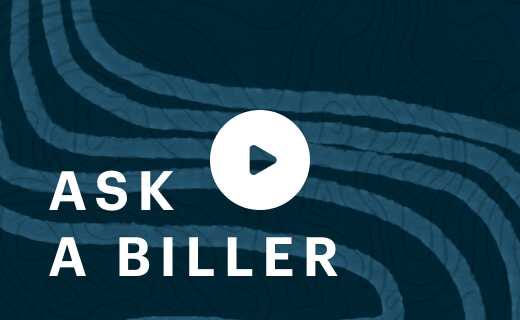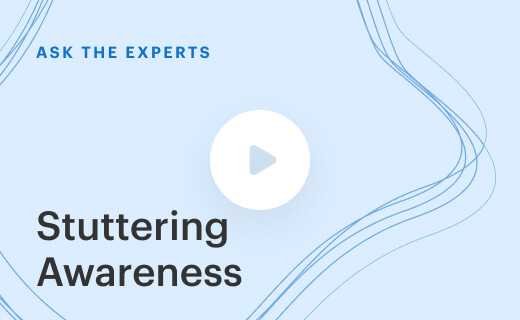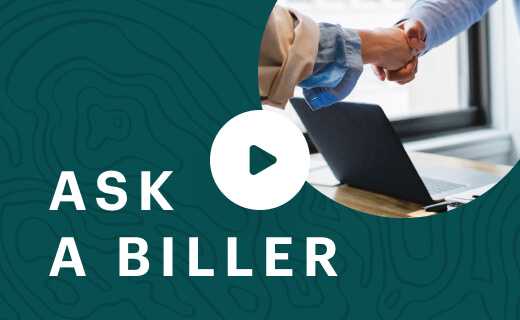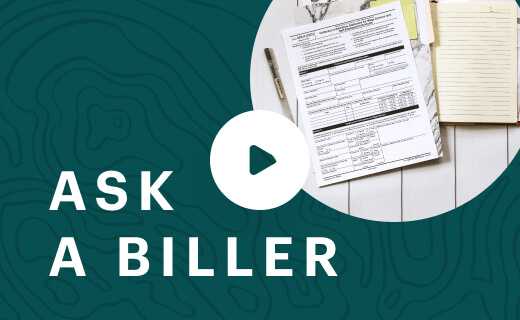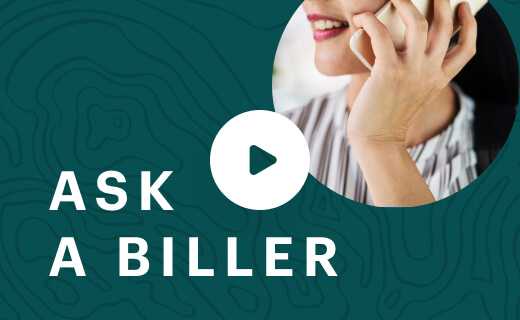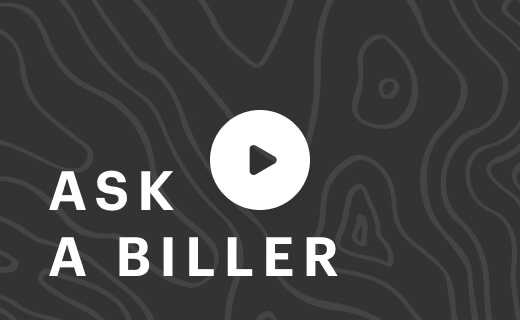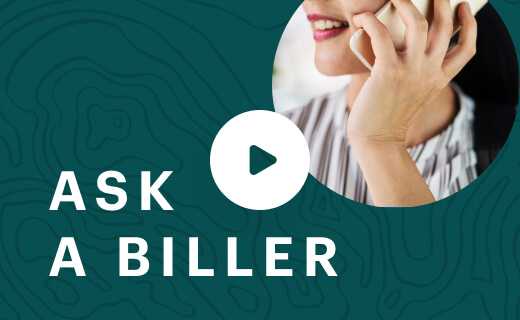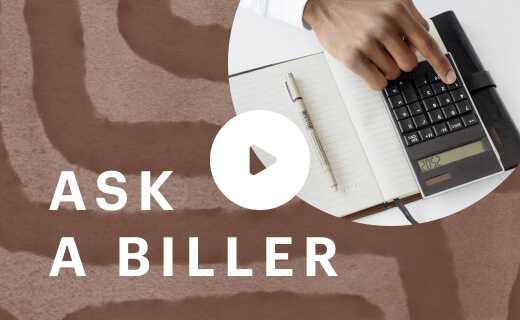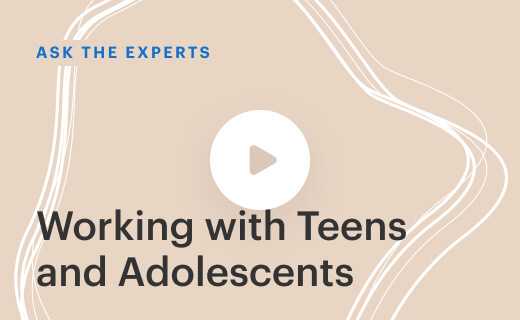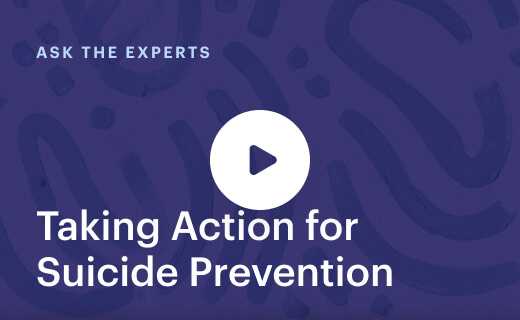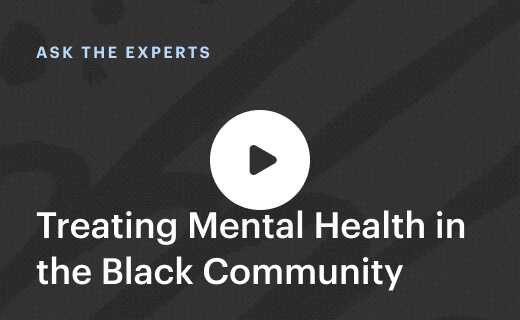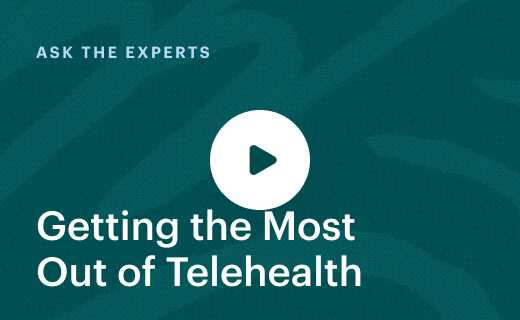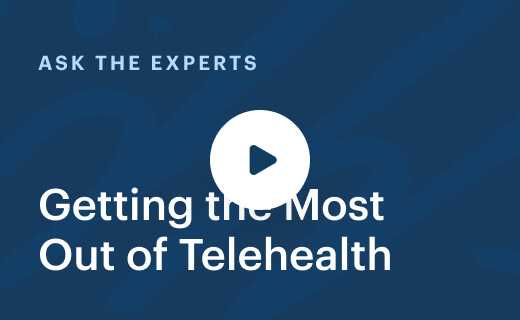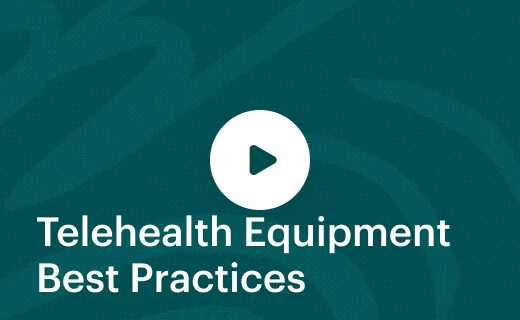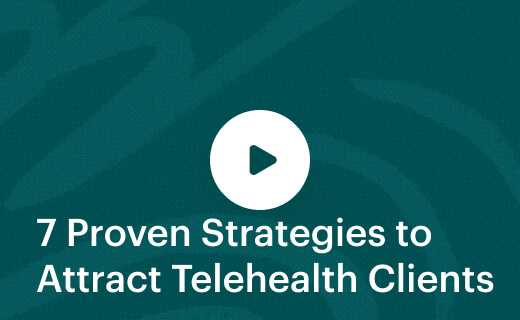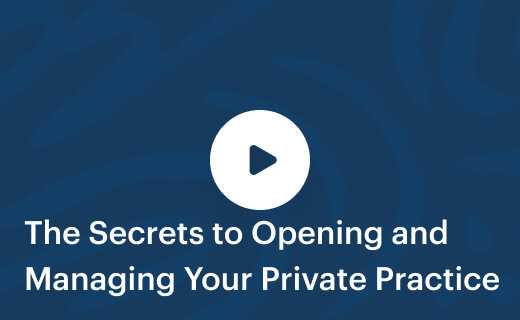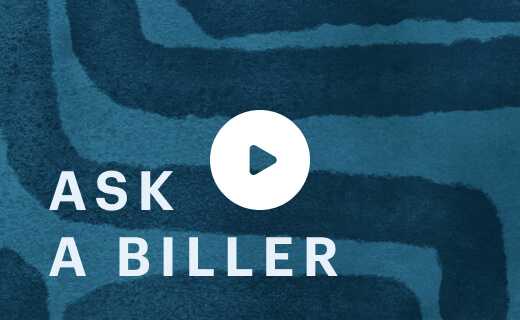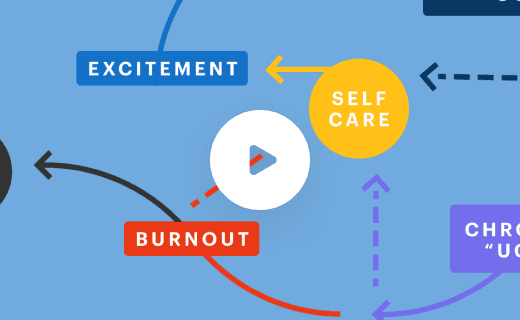20 Essential Telehealth Tips for Your Virtual Practice
Free 30-day trial, access all this & more:
Want to know about other great webinars?
Pamela Suraci is a certified telemental-health provider, as well as a full-time licensed marriage and family therapist with a therapy office in San Luis Obispo, CA. In this wide-ranging discussion with SimplePractice’s team, she shares tips for therapists who are beginning to use telehealth services.
Thanks to her extensive experience providing virtual therapy services to her clients, she’s an excellent resource for those who’re beginning to use telehealth or telemental health services for the first time.
In this wide-ranging discussion with Travis from SimplePractice, Suraci shares several tips for therapists who want to offer telehealth services, including:
- Instructions on setting up your telehealth equipment
- Ways to address privacy concerns
- Tips for handling payments and client intake forms
Learn more from telehealth expert, Pamela Suraci, and see how even the smallest of details can elevate your clients’ experience.
- Why is telehealth important?
- Do I need to be tech-savvy to use telehealth?
- How should I get started and test my telehealth set-up?
- Do I have to look into the camera?
- What equipment do I need for telehealth?
- What should I expect as I start using telehealth?
- Is there anything different about telehealth sessions?
- How do your clients access the telehealth session?
- How do you help clients maintain their privacy during telehealth sessions?
- Any advice for helping clients transition after their telehealth session?
- Do you have some tips for self-care for therapists?
- What are techniques for the elevated anxiety that many are feeling?
- How do you notify clients about the new telehealth options?
- How do you collect client intake forms when using telehealth?
- How do you collect informed consent forms for telehealth?
- How do you respond to clients who don’t think telehealth will work?
- How do you bill clients and accept payments online?
- How do you use online appointment requests in SimplePractice?
- Any final advice for therapists interested in telehealth?
- Why is a professional presentation important to client experience?
1. Travis, SimplePractice: Why is telehealth important?
Pamela Suraci, LMFT: This is a chance for us as therapists to really make our voices heard. We’re going to be an important part of this process, and I think we’re going to see telehealth really move forward from here on out. It’s in our best interest to get very good with telehealth because this is forcing people to see doctors, therapists, and lawyers like this. People are going to get really cool with it really quick—and we need to keep up.
This is a chance for us as therapists to really make our voices heard. We’re going to be an important part of this process, and I think we’re going to see telehealth really move forward from here on out.
2. Do I need to be tech-savvy to use telehealth?
No—if I can do it, you can do it. Right now, people really, really need to talk to their therapists and that means they’re looking for somebody who can work online like this.
3. How should I get started and test my telehealth set-up?
It’s always a good idea to try it out with a friend. You can create a dummy account in your practice management software, send it to a friend, have them sign in as a client, and then get their feedback. “Does this sound better or does this sound better?” Try it with headphones and without headphones. A lot of people aren’t quite sure where to look, so you can talk to your friend online and say, ”Okay, so does it look like I’m looking at you now?”
4. Do I have to look into the camera?
What I hear from a lot of people is that they feel like they have to look into the camera, but if you sit far enough back and the lens of your camera is level, it’ll seem like you’re looking at your client. If you’re up really close, then you would have to look in the camera and that’s really exhausting. We’re used to looking at human faces and interacting, and if you’re looking at the camera, you can’t see what your client is doing, and it also just wears you out really fast.
What I hear from a lot of people is that they feel like they have to look into the camera, but if you sit far enough back and the lens of your camera is level, it’ll seem like you’re looking at your client
So, have your friend say, “Okay what’s it look like here? How about here?” I always recommend that you have a head-and-shoulders view because if it’s just your head, it’s a massive head on your client’s screen. They don’t need to see your whole body. I talk with my hands a lot, so you can see my hands and that’s helpful, especially for clients who know me.
5. What equipment do I need for telehealth?
I don’t use headphones often. I can do it with or without. Sometimes, if it’s just going to be a short period of time, I go ahead and do it just for sound quality.
I also have an external camera. Then, I have a ring light because the lighting is hard to adjust. Like today, it’s kind of foggy and rainy outside, so it wouldn’t give me enough light by my window. You can crank it up or down and it can be different colors.
I think the headphones, the camera, and the ring light altogether were less than $100. They’re not expensive and they really do enhance the experience, so I think that’s really important. If we’re fuzzy and grainy, it’s not going to be a good experience for our clients.
6. What should I expect as I start using telehealth?
It takes a little bit to get used to. But whenever you start anything new, it can be draining. Just like all therapists, when I started out and I didn’t know anything about being a therapist, I came home exhausted. This is a much quicker learning curve. When you’re online and you’re looking at your client, it’s not the same as being in the same room with them, but it’s close enough. It’s better than nothing.
It takes a little bit to get used to. But whenever you start anything new, it’s tiring because you’re doing something new. Just like all therapists, when I started out and I didn’t know anything about being a therapist, I came home exhausted.
7. Is there anything different about telehealth sessions?
One of the things that you have to remember is that if you’re working with telemedicine and telehealth, you tend to sit really, really still. When we’re with other people, we don’t realize it, but we have lots of little micro-movements. On telehealth, you’re sitting really still, so you want to make sure that you give yourself at least 15 to 30 minutes in between sessions so you can get up, move around, get a drink of water, stretch, do whatever you need to do to move yourself.
If you move in between sessions, set yourself up so you can see your client’s face. And make sure you’re taking good care of yourself just like you have to do when you’re at your office. That way you won’t find it super exhausting. It’s a new thing, so cut yourself some slack.
8. How do your clients access the telehealth session?
If you’re a SimplePractice user, it couldn’t be easier for you or your client. Basically, you’re just going to go into your calendar and click on it where it says “Start the Video Session.” It gives you a little preview and then you’re in, and that’s the same on your client’s end. People sign in on their computers, on their phones, from their car, from their office, from their bedroom. I talked to somebody today who was in their walk-in closet because everybody’s home with them. So, it’s super easy and transportable.
9. How do you help clients maintain their privacy during telehealth sessions?
Whenever I start a telehealth session, the first question is always, “Where are you?” and then, “Do you have privacy?” That’s the thing that I also want to emphasize. When clients come to my office, I am in charge of their privacy. With telemedicine, they’re in charge of their own privacy—but it’s still on us to make sure they know that.
If, for example, they say, “I’m at home,” you have to say to remind them, ”Are you home alone? Will you be interrupted?” That is just one of the things about telemedicine. It’s not a downfall. It’s just a thing we need to remember. We need to find out where they are.
Sometimes, clients go out to their car to do it, because that’s sort of their mobile office. ”Where are you parked?” “I’m parked at _____.” We should know where they are, so that’s always the first thing in my notes: client privacy verified and client location, and then where they’re going to go after. Like, “Okay, tell me what are you going to do after our telehealth session.” Just so I know that they’re going to take care of themselves. I note that, too.
10. Any advice for helping clients transition after their telehealth session?
Generally speaking, I give clients homework. It might just be, “Here’s something to think about. Write down these three things.” Clients may feel like they’ve just had a pretty intense interaction. So the transition to having no interaction—like if they lived by themselves—can feel really lonely.
So, we want to give them a heads up, “Hey, there’s going to be a little bit of a transition period here, so when we’re done, I want you to write down three things that you’re taking out of this session. Then tonight before you go to bed, I want you to write down three things you did right. And in between now and when you go to bed, I want you to call your friend, your sister, your mom, your whatever”—somebody we know is a good person for them to talk to. “Call them (don’t text them), get another voice.”
I always encourage people to do some movement. I think after we’ve been sitting for an hour and talking about hard stuff, it’s really important to get up and walk around. Everybody that I see, I encourage to meditate. I always encourage people to download Insight Timer and Headspace, which are good apps that have free versions. I really encourage that, especially as people are leaving an intense interaction. If they feel kind of wound up, I want them to have a tool to go to.
So, there’s movement, there’s meditation, and there’s contact with other people, as well as kind of writing for themselves what they took out of the session. I always want people to write that down, by the way; that’s not just telehealth. I always tell people, “When you leave here, I want you to jot down three things you got out of today’s session.” It really helps solidify that and that’s true across the board.
11. Do you have some tips for self-care for therapists as they change a lot of in-person time to screen time?
I think it’s really important. We are used to having a lot of incoming personal contact. But that’s the nature of our job, and that’s why sometimes we go home to our loved ones and say, “That’s it, I am related out, don’t talk to me about anything serious.” But it does feed us; therapists tend to be people who really like that kind of interaction. So, we’re going to have to calibrate for that change.
Of course, it’s new, so it’s a little more tiring until you get used to it. It makes you sit still a lot as we discussed, so you’re going to have to move. And then you’re going to want to make sure that you’re doing your meditation, you’re doing your self-care, you’re making sure you’re hydrating, fueling yourself, and not eating a bunch of junk food.
You’re also going to want to make sure that you check in with colleagues, friends, and family members. I do a lot of telehealth, so I’m kind of the person that people call for things like, ”How do you do informed consent for this?” and “Where do you sit?” I love giving out that information, I’m happy to do it, but selfishly, it’s just good for another therapist to give me a call. I just really like being able to talk to my colleagues because we’re all in this boat together. It’s different from what our family members might be going through.
12. What are techniques for the elevated anxiety that many are feeling?
This is a really unique time. We’ve never done this before. I am old enough to remember way back and I have never been in a shelter-in-place situation for this kind of extended period of time. So, our clients are coming in with whatever they were originally coming in with, but then layered into that is the anxiety of the unknown. “What is this going to look like?”
We’re in a really anxious environment, and there’s an expression in therapy: ”Any trauma is all trauma.” When people start to have that heightened anxiety, it can bring back and trigger a lot of old wounds around feeling helpless, feeling trapped, feeling like there won’t be enough or like they won’t be enough. Those are two really common themes: I will not be enough—smart enough, strong enough, wise enough or I won’t have enough.
It’s really important to normalize it by saying, “Yes, of course you’re feeling anxious and of course this is bringing up old stuff. Let’s talk about that.” And it might be that we’re going to set aside that concern that you had with your kid or that conflict you had with your mom while we talk about this anxiety, because if we don’t deal with that underlying anxiety, you’re probably not going to be at your best for other things.
So, we’re normalizing the anxiety, normalizing looking for things, like information. I posted an article on my website with all the do’s and don’ts, and one of them is: don’t obsessively check the news. You’ll frighten yourself. Check in the morning, check in the evening, but don’t look at it in between.
Then also, just the regular self-care, like don’t eat a bunch of junk food, and change your clothes. Don’t wear your pajamas all day, you’ll feel weird and icky. Wash your face, if you shave, shave. If you wear makeup, put on makeup. Brush your hair, brush your teeth, walk your dog, play with your kids, call your mom—all of those things that I would suggest people do are things they do every day.
13. How do you notify clients about the new telehealth options?
I sent out an email last week to everybody. It had my do’s and don’ts article, it had the attachment of the PDF that you folks at SimplePractice put together for telehealth, and it had, “Hello, I hope you’re doing well and I just want to let you know everything is telehealth now.” I put a link on my website and there’s a link in that email to my clients: ”If you need to schedule, please check in.”
I had a number of clients who got back in touch and said, “I didn’t know what you were doing. I’m glad this is an option.” I had a couple people who haven’t been in for a while, and I had some people just say, ”That was really nice, thank you for thinking of me.” I think that’s a really important thing. We’re so close temporarily in our clients’ lives. We know more about them than their best friends do. To know your therapist thought of you at a time where you feel kind of scared is really soothing.
I’m not doing that because I want them to make appointments. I’m doing that because I want them to know somebody out there has their name in mind. So, I put in resources about where you can find free meditation, where you can find a free yoga class, where you can find good-for-you soaps and good-smelling things, a hand sanitizer recipe you can make at home—a bunch of stuff like that.
People appreciate that, and it keeps you at the top of mind. Let’s say they’re okay, they don’t feel like they need to make an appointment, but they have a friend who’s flipping out. They can say, “Here, please call Pamela.”
14. How do you collect client intake forms when using telehealth?
I do take new clients virtually. The way I do it is, unless it’s a direct referral from a physician that I’ve worked with before or a client that I’ve worked with, I’ll usually do a 15-minute free video consultation. That gives them a chance to meet me (sort of) and to try out the telehealth platform and I’ll make sure that this seems like the right fit. If it’s not the right fit, then I’ll direct them to a different directory or to somebody I know in their area.
Then, I send all the intake documents off to them through SimplePractice and they fill all those out. Then, when they come in—and when I say come in, they’re either coming into my physical office or they’re coming into my virtual office—I say, “Thank you so much for filling all this out, this really saves us a lot of time so we can get down to business. But I do have a couple questions.” And I can go through all of their intake information before they come in, which gives me an opportunity to get more information.
This also gives them a chance to kind of sit down and think about what they want to say and give the amount of information they want to give. It’s a little counterintuitive for a therapist, but bear with me on this.
When a client comes in, they may have things they know they need to talk about but don’t. They might have shame about something that’s gone on. They should be allowed to give us the amount of information they want to give us until they get to know us and know that we’re safe. The intake is a really good way for them to do that. It’s very, very safe. And my intake is very thorough, but it really helps people kind of narrow down what they want.
One of my questions is, ”What are your goals for counseling?” That really helps them because we’re talking about when you’re done, right? We’re not talking about “What’s your problem?” We’re talking about ”What does it look like when you have what you want?” and that really helps people get very focused. So, I think that online intake is really important.
15. How do you collect informed consent forms for telehealth?
I do all of the informed consent work online. They fill all that out there. I have them sign a document, which makes clients acknowledge and agree to my fees and that I don’t take insurance. I think the online intake process is really helpful for clients—and super helpful for me. Then, when they come in for their intake, it’s all about them. It’s not about confidentiality laws. Make sure they understand everything, but that takes five to 10 minutes instead of 20 to 30 minutes. Then, we get to really focus on why they’re there, which is what they want to be there for.
16. How do you respond to clients who don’t think telehealth will work?
That’s really common. I tell people to give it 15 minutes. If they really feel like they’re just not going to be able to do it, then we don’t have to finish the whole 55 minutes. Most people go, “All right, I’ll try it,” and it turns out it’s fine.
I do have some people, though, who’ve been laid off from work or they’re really worried about money, and I don’t want them to not have services. So, I offer two options. I never, ever lower my rates under any circumstances, and I really encourage other therapists to consider this. I have 10% of my slots available for zero to very low fee, and they will always be open for people who can’t afford my services but can benefit from them. So, it’s 10%, but nobody else gets a reduced fee.
Right now, because people are worried about money, I tell people to attend their session anyway. Then they can pay me later. I’m not that worried if they don’t end up paying me. They still got their therapy. If they’re going to pay me, it’s going to happen, and if it doesn’t, I wasn’t going to get paid anyway.
The other thing I’m offering people is to do a half-hour check-in and that’ll cost half as much as their regular session. You still get a check-in, and that really helps people to know that that’s an option. And I do take credit cards, and that’ll defer the payment out 30 days.
I tell people to give it 15 minutes. If they really feel like they’re just not going to be able to do it, then we don’t have to finish the whole 55 minutes. Most people go, “All right, I’ll try it,” and it turns out it’s fine.
17. How do you bill clients and accept payments online?
I think best practice is to keep a credit card on file. When clients do their intake, I get their credit card information and their permission to charge their card. That way, at the very end of the session, we finish up and I say, “Okay, I’ll just charge this to the card on file.” And that’s it—instead of having to spend five minutes after we’ve had this really intense personal conversation to say, ”Go get your wallet.”
It really kind of takes away from the tone of the meeting that you’ve just had. Plus, it’s just super easy at the end of the day. You can put it on AutoPay or you can just click “Pay” through all your sessions and that takes care of it.
I do have clients who prefer to pay with cash or check, and when they’re coming into the office, that’s fine. For those people, if I’ve had them as a client for a while and they really want to pay me with the check, they can just put it in the mail. But for the most part, people are paying with credit cards anyway. I feel like people are pretty used to paying for things with credit cards online now.
18. How do you use online appointment requests in SimplePractice?
I had it on my website that people could schedule their free 15-minute consult, and I actually had to pull that down because I was getting overwhelmed. Now, I have a pop-up that people can use to schedule from my website really easily.
They just go to the Client Portal and schedule it themselves. And that’s great, because if somebody has to change their appointment and they have to call me or text me, then I have to call them or text them, and we go back and forth. They just go in and move their appointment. I get a notification that this person cancelled and requested a new appointment. I approve it, and that’s it—super easy.
It’s not that I don’t like talking to my clients, I do, but I can’t always get to them quickly. And if I call them and they’re not available, then we trade voicemails or I have to wait and, in the meantime, that spot can be taken by somebody else. My book is really full and people recognize that, so they call dibs on the appointments they want far ahead. And then that gives me a predictable income, too.
19. Any final advice for therapists interested in telehealth?
I think what I would say is that this is a chance for us as therapists. If we can really advocate for our clients and advocate for ourselves professionally, we are going to boost our visibility and we’re going to boost our viability. The way we can do that is to present ourselves professionally and warmly.
If you’re not already using an electronic health records (EHR) system, I strongly recommend considering it. It’s portable and professional. My clients love that they can fill out all their forms, contact me using Secure Messaging, and make their own appointment schedule. Plus, it gives my business a professional feel.
If we can really advocate for our clients and advocate for ourselves professionally, we are going to boost our visibility and we’re going to boost our viability.
20. Why is a professional presentation important to client experience?
I think I have a professional business, but it doesn’t matter what I think. What matters is what my clients think, and they come to me believing already, “I’m in good hands because this person has it together.” And again, I think I have it together, but I need them to know I have it together. That professional presentation is really, really important.
I want you to think about if you went to a doctor and they went, “Yeah, we’ll figure it out when you get here.” You kind of wonder about that. But if they said, “Okay, we’re all set, so you have an appointment on Tuesday at 2PM. I’m sending your things right now. Please open that email, set up your portal, fill out your forms, and I will see you Tuesday.” That looks and sounds better, you will be more prepared, and they feel like they’re in good hands.
I consult with a lot of therapists and mentors, and that’s where I start—make sure you have a system that’s going to grow with you and make sure that it looks professional. This is a profession; we need to present it as such. We are right now at the cusp of being really, really visible if we play our cards right.
Build the best practice you can.
Our resources to help you & your practice take the next step.


